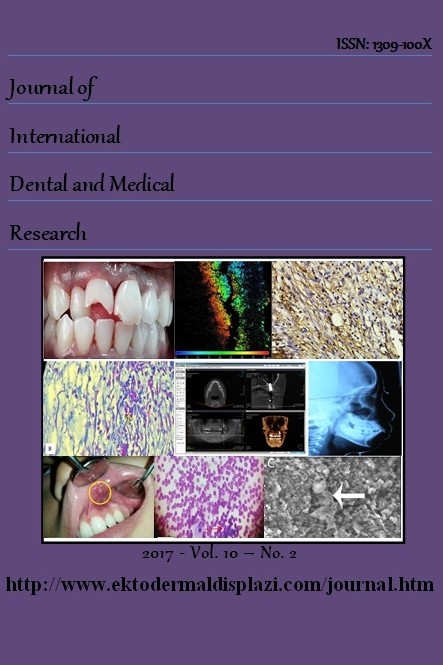Anesthetic Management of Pregnant Patients with Appendectomy
-
Anesthetic Management of Pregnant Patients with Appendectomy
___
- Zhang Y, Zhao YY, Qiao J, Ye RH. Diagnosis of appendicitis during pregnancy and perinatal outcome in the late pregnancy. Chin Med J 2009; 122: 521-4.
- Kuczkowski KM. Nonobstetric surgery in the parturient: anesthetic considerations. J Clin Anesth 2006; 18: 5-7. http://dx.doi.org/10.1016/j.jclinane.2005.11.003 PMid:16517324. Van De Velde M, De Buck F. Anesthesia for non-obstetric surgery in the pregnant patient. Minerva Anestesiol 2007; 73: 235
- Mourad J, Elliott JP, Erickson L, Lisboa L. Appendicitis in pregnancy: new information that contradicts long-held clinical beliefs. Am J Obstet Gynecol 2000; 182: 1027-9.
- Carvalho B. Non-obstetric surgery during pregnancy. IARS Review Course Lectures 2006; 23-30.
- Ni Mhuireachtaigh R, O’Gorman D. A. Anaesthesia in pregnant patients for nonobstetric surgery. Journal of Clinical J Clin Anesth 2006; 18: 60-6.
- Baden JM, Rice SA. Metabolism and toxicity of inhaled anesthetics. 5th edition. Miller RD Philadelphia Churchill Livingstone 2000, 147-73.
- Goodman S. Anesthesia for nonobstetric surgery in the pregnant patient. Semin Perinatol 2002; 26: 136-45.
- Yağcı MA, Sezer A, Hatipoğlu AR, Coşkun I, Hoşcoşkun Z. Acute appendicitis in pregnancy. Dicle Medical Journal 2010; 37: 134Jung SJ, Lee do K, Kim JH, Kong PS, Kim KH, Bae SW. Appendicitis during Pregnancy: The Clinical Experience of a Secondary Hospital. J Korean Soc Coloproctol 2012; 28: 152-59.
- Pastore PA, Loomis DM, Sauret J. Appendicitis in pregnancy. J Am Board Fam Med 2006; 19: 621-26.
- Başlangıç: 2008
- Yayıncı: Ektodermal Displazi Grubu
Taskin GURBUZ, Fatih SENGUL, Tevfik DEMİRCİ, Munevver CORUH
Nisu SWASTİKA, Madhuri GAWANDE, Minal CHAUDHARY, Swati PATİL
Asok MATHEW, Aysha Rashed Ali Al ANSARİ, Ahmed Ali RADAİDEH, Nisha T VARUGHESE
Oral Health Attitudes and Behavior Among Dental Students in Ajman, United Arab Emirates
The Usage of Low-Dose Lidocaine Fentanyl in Intravenous Regional Anesthesia
Abdulmenap GUZEL, Feyzi CELİK, Öznur ULUDAG, Erdal DOGAN, Celil ALEMDAR, Besir YİLDİRİM
Anesthetic Management of Pregnant Patients with Appendectomy
Feyzi CELİK, Abdullah OGUZ, Zeynep Baysal YİLDİRİM, Abdulmenap GUZEL, Erdal DOGAN, Taner CİFTCİ, İlker Onguc AYCAN
Rehabilitation of Open Bite With Diastema Using Zirconia Ceramic Crowns: Case Report
Sedat GUVEN, Tahir KARAMAN, Mehmet UNAL, İhsan Cemal MELEK
A Survey on Dental Implant in Use Among UAE and Iranian Dentists
